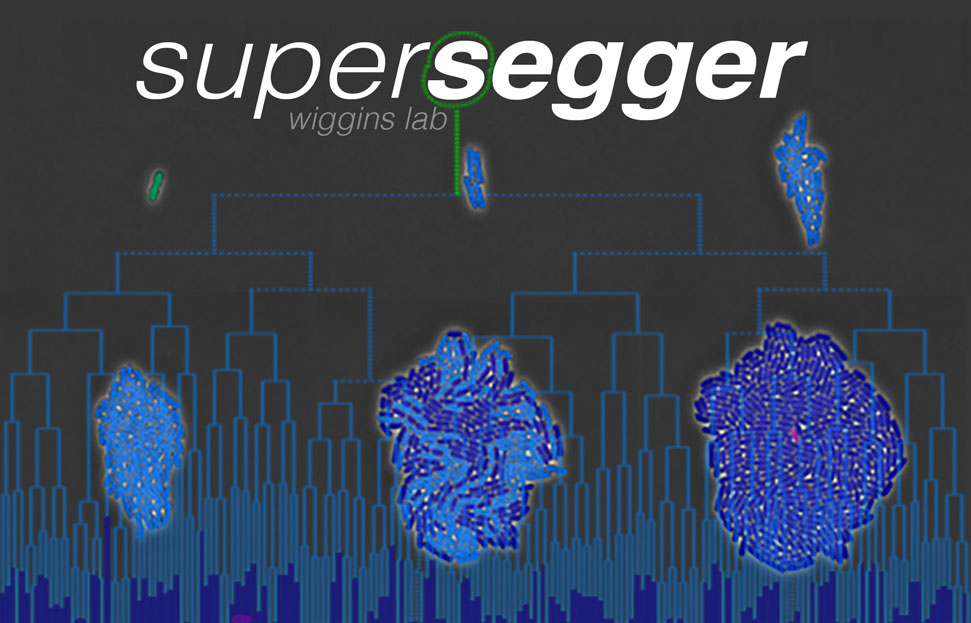About SuperSegger
SuperSegger is a completely automated MATLAB-based trainable image cell segmentation, fluorescence
quantification and analysis suite written by our lab. It is particularly well suited for high-throughput time lapse fluorescence microscopy
of in vivo bacterial cells.
NEW!
SuperSegger has been updated to work with the improved segmentation algorithm, Omnipose.
The modified version, SuperSegger-Omnipose, and further installation instructions can be found here.

More information about the software and its capabilities can be found at the published work
Stylianidou, S., Brennan, C., Nissen, S. B., Kuwada, N. J. and Wiggins, P. A. (2016), SuperSegger: robust image segmentation, analysis and lineage tracking of bacterial cells. Molecular Microbiology, 102: 690–700.
If you use SuperSegger in your research, please use this reference for citation.
Some of the basic uses of SuperSegger:
Well suited for the high-throughput analysis of cell-cycle dynamics of proteins and complexes by time-lapse fluorescence microscopy in single bacterial cells.
Highly reliable in segmenting cells in contact with other cells.
Optimized for rod-like bacterial cells.
Incorporates machine-learning algorithms, to optimize cellular boundaries for different cell shapes.
Links cells from frame-to-frame in time-lapse imaging, during which it applies error correction to correct segmentation errors that may arise in segmentation.
Identifies mothers, daughters and sisters. At any frame the cell lineage in the past and future of timelapse can be tracked.
Identifies cells for which both birth and division were observed.
Identifies cells in contact with a cell.
Calculates fluorescence statistics and identifies foci in fluorescence images.
Extracts a variety of information saved per individual cell, per frame and at a table of cells versus life pertaining information (clist).
Includes post-processing tools at both the individual cell level and the population level, such as fluorescence kymographs, cell towers, plotting tools for a variety of fields, and consensus images.
Allows the possibility of displaying information for subpopulations of the dataset, by gating on different variables.
It is modular, allowing partial use according to the needs of the user
It can either be run programmatically or through a graphical user interface.
|

